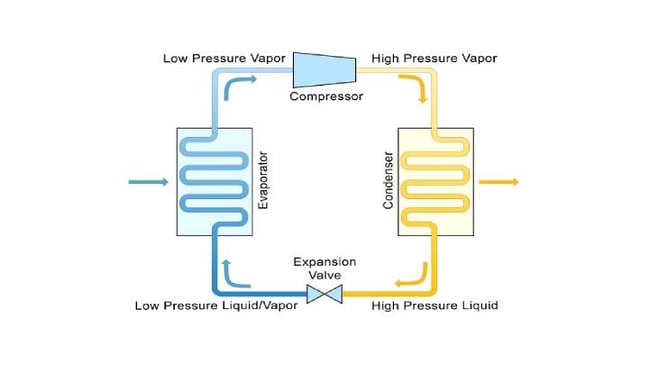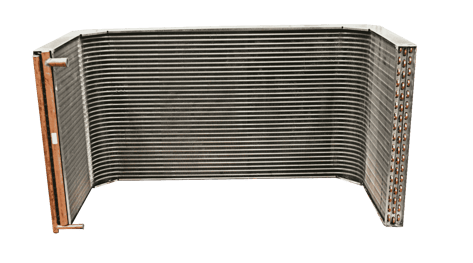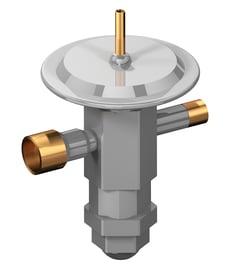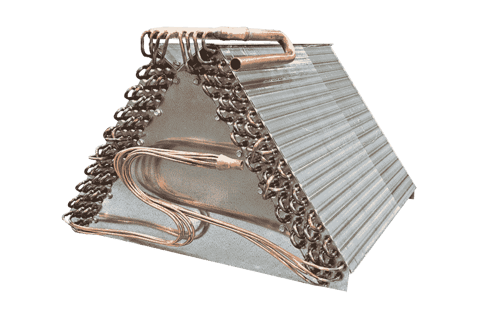We’ve all been there. You step inside on a hot day and are mercifully greeted with a wall of cool air. Well, you have the refrigeration cycle to thank for that relief. While there are dozens of methods of heating and cooling, the basic function is still the same and is used in some form across countless industries and processes. But how does it work? This post will answer that question by outlining the main components of a standard refrigeration loop and the functions of each.
In simple terms, a refrigeration cycle's mission is heat absorption and heat rejection. As any HVAC instructor will tell you (emphatically), you can't make cold, you can just remove heat. The refrigeration cycle, sometimes called a heat pump cycle, is a means of routing heat away from the area you want to cool. This is accomplished by manipulating the pressure of the working refrigerant (air, water, synthetic refrigerants, etc.) through a cycle of compression and expansion.
Don’t get left out in the cold when it comes to heat transfer information. To stay up to date on a variety of topics on the subject, subscribe to The Super Blog, our technical blog, Doctor's Orders, and follow us on LinkedIn, Twitter, and YouTube.
That’s not the full picture, of course, but that’s the basic idea. Now, let’s get into the equipment that helps execute that job. There are certainly other components in most loops, but most would agree the four fundamental elements of a basic cycle are as follows:

The compressor
Compression is the first step in the refrigeration cycle, and a compressor is the piece of equipment that increases the pressure of the working gas. Refrigerant enters the compressor as low-pressure, low-temperature gas, and leaves the compressor as a high-pressure, high-temperature gas.
Types of compressors
Compression can be achieved through a number of different mechanical processes, and because of that, several compressor designs are used in HVAC and refrigeration today. Other examples exist, but some popular choices are:
1. Reciprocating compressors
2. Scroll compressors
3. Rotary compressors
The condenser
The condenser, or condenser coil, is one of two types of heat exchangers used in a basic refrigeration loop. This component is supplied with high-temperature high-pressure, vaporized refrigerant coming off the compressor. The condenser removes heat from the hot refrigerant vapor gas vapor until it condenses into a saturated liquid state, a.k.a. condensation.

After condensing, the refrigerant is a high-pressure, low-temperature liquid, at which point it’s routed to the loop’s expansion device.
The expansion device

These components come in a few different designs. Popular configurations include fixed orifices, thermostatic expansion valves (TXV) or thermal expansion valves (pictured above), and the more advanced electronic expansion valves (EEVs). But regardless of configuration, the job of a system’s expansion device is the same - create a drop in pressure after the refrigerant leaves the condenser. This pressure drop will cause some of that refrigerant to quickly boil, creating a two-phase mixture.
This rapid phase change is called flashing, and it helps tee up the next piece of equipment in the circuit, the evaporator, to perform its intended function.
The evaporator

The evaporator is the second heat exchanger in a standard refrigeration circuit, and like the condenser, it’s named for its basic function. It serves as the “business end” of a refrigeration cycle, given that it does what we expect air conditioning to do – absorb heat.
This happens when refrigerant enters the evaporator as a low temperature liquid at low pressure, and a fan forces air across the evaporator’s fins, cooling the air by absorbing the heat from the space in question into the refrigerant.
After doing so, the refrigerant is sent back to the compressor, where the process restarts. And that, in a nutshell, is how a refrigeration loop works. If you have any questions about the refrigeration cycle or its components and how they work, give us a call. We've been helping customers get the most out of their HVAC and refrigeration equipment for nearly 100 years.
Don’t get left out in the cold when it comes to heat transfer information. To stay up to date on a variety of topics on the subject, subscribe to The Super Blog, our technical blog, Doctor's Orders, and follow us on LinkedIn, Twitter, and YouTube.






